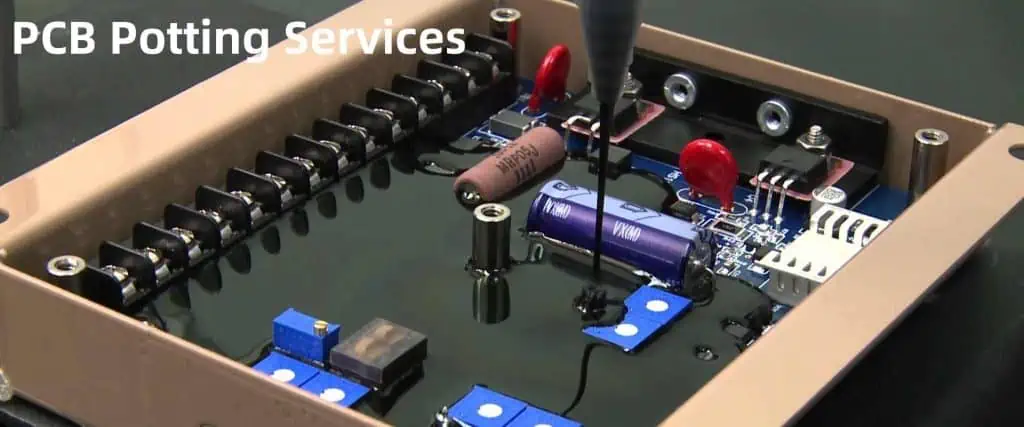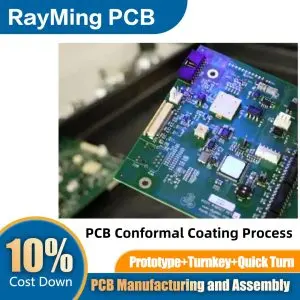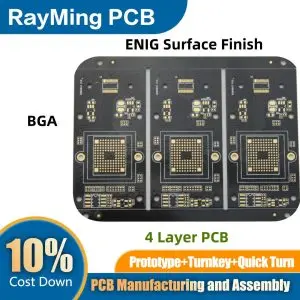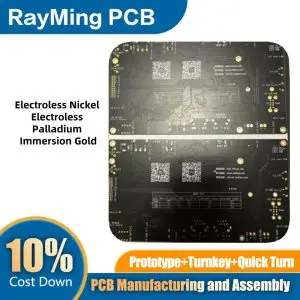When it comes to protecting printed circuit boards (PCBs) from environmental hazards, engineers face a critical decision between two primary protection methods: potting and conformal coating. Both techniques serve the essential purpose of shielding electronic components from moisture, dust, chemicals, vibration, and temperature extremes, but they achieve this protection through fundamentally different approaches. Understanding the distinctions between these methods is crucial for making informed decisions that can significantly impact product performance, longevity, and cost-effectiveness.

Understanding Conformal Coating
Conformal coating represents a thin protective layer, typically ranging from 25 to 250 micrometers in thickness, that is applied directly to the surface of populated PCBs. This protective film conforms to the contours of the circuit board and its components, creating a barrier that maintains access to the board while providing environmental protection.
Types of Conformal Coatings
The conformal coating family includes several material options, each with distinct characteristics. Acrylic coatings offer excellent moisture resistance and optical clarity, making them ideal for applications where visual inspection remains necessary. Silicone coatings provide superior flexibility and temperature resistance, functioning effectively across extreme temperature ranges. Polyurethane coatings deliver robust chemical and abrasion resistance, while parylene coatings offer unparalleled uniformity and penetration into tight spaces.
Application Methods for Conformal Coating
Conformal coatings can be applied through various methods, including spray coating, dip coating, brush application, and selective coating systems. Spray coating provides excellent control and is suitable for high-volume production, while dip coating ensures comprehensive coverage for complex geometries. Selective coating systems offer precision application, allowing specific areas to remain uncoated for connections or heat dissipation.
Understanding Potting Compounds

Potting involves completely encapsulating electronic assemblies in a solid or gel-like compound, creating a protective shell around the entire circuit. This method provides maximum environmental protection by completely sealing components from external influences. Potting compounds typically range from flexible gels to rigid thermoset materials, offering varying degrees of protection and accessibility.
Types of Potting Materials
Potting materials include epoxy resins, which provide excellent mechanical strength and chemical resistance; silicone compounds, offering flexibility and temperature stability; and polyurethane materials, delivering good mechanical properties with moderate flexibility. Each material type brings specific advantages depending on the application requirements and environmental conditions.
Potting Application Process
The potting process involves placing the PCB assembly into a housing or mold, then dispensing the potting compound to completely surround the components. The material is then cured through heat, chemical reaction, or UV exposure, depending on the compound type. This process requires careful consideration of air bubble elimination, proper mixing ratios, and curing parameters to achieve optimal results.
Comparative Analysis: Protection Levels
When evaluating protection effectiveness, potting generally provides superior environmental protection due to its complete encapsulation approach. Potted assemblies offer exceptional resistance to moisture ingress, dust contamination, and chemical exposure. The thick barrier created by potting compounds also provides excellent vibration damping and shock protection, making this method ideal for harsh industrial or military applications.
Conformal coating, while providing good environmental protection, offers a lighter level of defense. The thin coating effectively prevents moisture and contaminant contact with circuit elements but may not provide adequate protection in extremely harsh environments. However, conformal coatings excel in applications where some level of environmental protection is needed without completely isolating the circuit from its surroundings.
Maintenance and Rework Considerations

One of the most significant differences between these protection methods lies in their impact on maintenance and rework capabilities. Conformal coatings can often be removed through solvent dissolution, mechanical scraping, or thermal methods, allowing for component replacement and circuit modifications. This reversibility makes conformal coating attractive for applications where future modifications or repairs are anticipated.
Potting compounds, particularly rigid formulations, create permanent encapsulation that makes component access extremely difficult or impossible. While some soft potting gels can be mechanically removed, the process is often time-consuming and may damage delicate components. This irreversibility must be carefully considered during the design phase, as it essentially makes the assembly disposable in many cases.
Cost Considerations and Economic Impact
From an economic perspective, conformal coating typically requires lower initial material costs and simpler application equipment. The thin film application uses minimal material, and the coating process can often be integrated into existing production lines with moderate equipment investment. Labor costs remain relatively low, and the reversible nature of most coatings provides long-term value through repairability.
Potting generally involves higher material costs due to the volume of compound required to fill the enclosure completely. Additionally, potting often necessitates custom housings or molds, adding tooling costs to the overall project expense. The specialized dispensing equipment and curing systems required for potting also represent significant capital investments, particularly for automated production systems.
Performance in Specific Applications
The choice between potting and conformal coating often depends heavily on the specific application environment and requirements. In aerospace and military applications, where maximum protection is paramount and cost is secondary, potting frequently provides the necessary level of environmental protection. The complete encapsulation protects against extreme temperature cycling, high humidity, salt spray, and mechanical shock that aircraft and military equipment regularly encounter.
For consumer electronics and commercial applications, conformal coating often represents the optimal balance between protection and practicality. Products like smartphones, computers, and home appliances benefit from the moisture and dust protection that conformal coating provides while maintaining the ability for service and repair. The thinner profile also helps maintain compact product designs where space is at a premium.
Industrial applications present varied requirements that may favor either approach. Process control systems in chemical plants might require the complete isolation that potting provides, while automation equipment that requires regular maintenance might benefit more from the accessibility that conformal coating allows.
Making the Right Choice
The decision between potting and conformal coating should be based on a comprehensive evaluation of environmental requirements, maintenance needs, cost constraints, and performance expectations. Applications requiring maximum environmental protection, where maintenance is minimal and cost is not the primary concern, often benefit from potting solutions. Conversely, applications needing moderate protection with maintained accessibility for service and repair typically favor conformal coating approaches.
The optimal choice also depends on production volume, available manufacturing capabilities, and long-term product strategy. High-volume production might favor conformal coating due to its streamlined application process, while low-volume, high-reliability applications might justify the additional complexity and cost of potting.
Both potting and conformal coating represent effective protection strategies, each with distinct advantages and limitations. The key to success lies in carefully matching the protection method to the specific application requirements, ensuring that the chosen approach delivers the necessary performance while maintaining economic viability and practical functionality throughout the product lifecycle.







